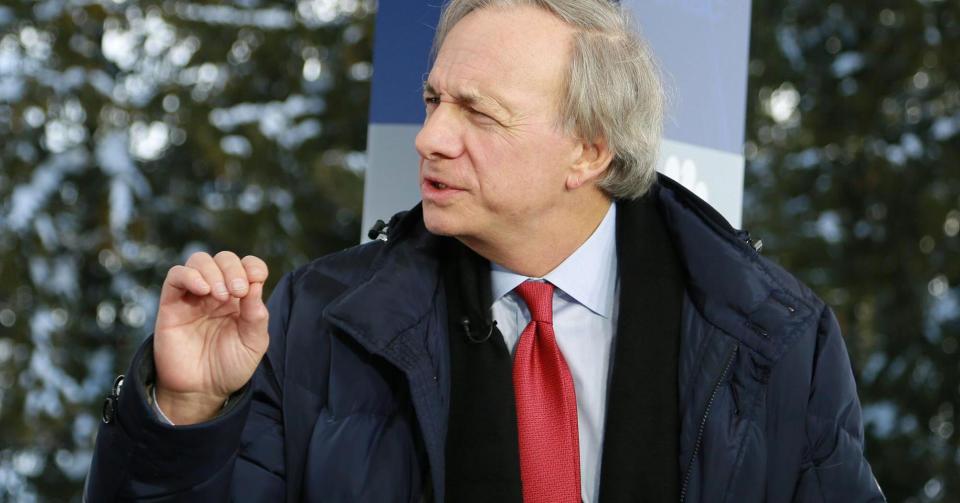Pepsi earnings, small business optimism — What you need to know in markets on Tuesday
Market volatility is still in place.
Stocks started the week with a huge move to the upside, as each of the major indexes gained more than 1.3% with the Dow pacing gains, adding 1.7%, or 410 points. The tech-heavy Nasdaq was up 1.5%, or 107 points, while the S&P 500 rose 1.39%, or 46 points.
Treasury yields, meanwhile, remained elevated.
The VIX index, which tracks market volatility, fell 3 points on Monday. But the big market swings that became a feature of 2018’s market environment in the last two weeks of trading are still clearly in place.
On Tuesday, investors will contend with a largely open calendar, as the National Federation of Independent Business’ latest reading on small business optimism will be the only big economic data report released in the morning.
Earnings due out Tuesday are expected from Pepsico (PEP), Under Armour (UAA), MetLife (MET), and Western Union (WU).
Through last Friday’s close, about 80% of the S&P 500’s market cap had reported earnings and about three-quarters of these companies had topped expectations. Despite these strong earnings, however, both the Dow and the S&P 500 are down slight on the year after the recent choppiness in markets.

Ray Dalio explains markets
Last week, President Donald Trump decried markets that were falling in the face of strong economic data.
Trump cited, as is his wont, some “old days” that may not have really existed, but also in his way drove at a truth about why the internal logic of investing often makes the field seem needlessly obtuse — if not, perhaps, outright wrong — about why it says the world works the way finance says the world works.
Namely, if everything in the economy and everything for corporations and (most) things for consumers are good, why do markets think this is bad?
Fortunately, Ray Dalio is here to help. Dalio, the co-founder of Bridgerwater Associates, has re-invented himself over the last couple years as a general purpose advice guru, culminating in the publishing of his book “Principles” in September 2017.
This has drawn the scorn of some in markets who wonder what’s really going on at Bridgewater if its co-chief investment officer doesn’t seem all that excited about investing. But as Bloomberg View’s Matt Levine has outlined, the whole point of Bridgewater’s success is that its just based on rules — principles — that determine how its investing is done (by computers, of course) while the actual work of employees is to talk about these ideas, each other, and tell their investors what’s going on.
But before this late-career pivot to a broader audience, Dalio also thought about markets a lot and became an expert at explaining what they do and why. And on Monday, Dalio did just that.

Writing on LinkedIn, Dalio explained the logic of what happens to interest rates and asset prices during the late-cycle part of a business cycle, which is what Dalio contends we are currently in. If you don’t buy this conclusion, then Dalio’s argument falls on deaf ears. But as we enter the tenth year of the post-crisis economic recovery, most in the investing community would broadly concede that the business cycle of leveraging corporations as business conditions improve ahead of an inevitable deleveraging is at least somewhat advanced.
And as the economy levers up and reaches its ultimate climax before a downturn, markets start to sniff out this change.
“In the ‘late-cycle’ phase of the short-term debt/business cycle, when a) an economy’s demand is increasing at a rate that is faster than the capacity for it to produce is increasing, and b) the capacity to produce is near its limits, prices of those items that are constrained (like workers and constrained capital goods) go up,” Dalio writes.
“At that time, profits also rise for those who own the capacities to produce those items that are in short supply. Then the acceleration of demand into capacity constraints and rise in prices and profits causes interest rates to rise and central banks to tighten monetary policy, which causes stock and other asset prices to fall because all assets are priced as the present value of their future cash flows and interest rates are the discount rate used to calculate present values. That is why it is not unusual to see strong economies accompanied by falling stock and other asset prices, which is curious to people who wonder why stocks go down when the economy is strong and don’t understand how this dynamic works.” (Emphasis added.)
Economists and market strategists and investing professionals are likely to take issue with some of the broad strokes that Dalio uses to paint his picture of how business cycles work. As an overview of how most people understand the business world to ebb and flow, however, this is about as clear as you’re going to see it laid out.
Essentially things are good in business and people take risks. Then things get too good and people take risks they shouldn’t take, and so things get worse until enough risk-takers re-emerge and the economy improves again. Rinse and repeat.
Elsewhere in his post, Dalio drew some headlines because of his suggestion that economic conditions indicate the risks of a recession occurring in the next 18-24 months are rising. This will either be right or wrong in time.
But the real value of Dalio’s post is its framing of current market conditions using the logic of the investing community. It’s the principle that matters.
—
Myles Udland is a writer at Yahoo Finance. Follow him on Twitter @MylesUdland
Read more from Myles here:
One candidate for Amazon’s next headquarters looks like a clear frontrunner
Tax cuts are going to keep being a boon for the shareholder class
Auto sales declined for the first time since the financial crisis in 2017
Foreign investors might be the key to forecasting a U.S. recession
It’s been 17 years since U.S. consumers felt this good about the economy


